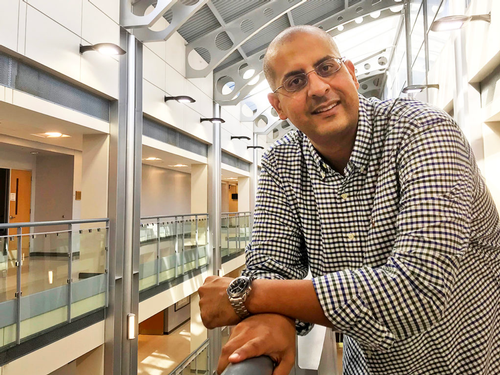TUESDAY, JUNE 16, 2020
Recently, the National Science Foundation awarded $250,000 to researchers at Missouri University of Science and Technology to study how the use of renewable energy is affected by the energy utility customers use, how utility companies distribute power, in addition to customer acceptance and other economic factors.
The study primarily focuses on these questions in relation to solar power.
“We want to understand the factors that affect electricity use and adoption of solar energy,” said Islam El-adaway, Hurst-McCarthy Professor of civil engineering at Missouri S&T. “This is one of multiple steps we hope to take. Once we understand more about economic factors and customers’ attitudes, we can take it to the next level.”

 |
| Missouri S&T |
|
Recently, the National Science Foundation awarded $250,000 to researchers at Missouri University of Science and Technology to study how the use of renewable energy is affected by the energy utility customers use, how utility companies distribute power, in addition to customer acceptance and other economic factors. |
For the study, El-adaway is working alongside PhD student Gasser Ali, in addition to collaborators from the University of Tennessee in Knoxville, Tennessee. Together, the researchers will reportedly work closely with a Tennessee Valley Authority-owned electric grid, where they will collect information about the physical components: transmission lines, the AC transmission grid and generating units.
On the consumer side of things, researchers plan to use customer surveys to determine how residential electric consumers use power and how motivated they are to participate in programs that allow them to reduce power consumption during periods of higher prices.
Information from commercial power users, specifically their experience and any concerns they might have about solar power, is also slated to be collected for the study.
Following data collection and analyzation, the information is slated to be incorporated into courses at Missouri S&T, where it will be used to raise public awareness of the benefits of solar power through panel sessions and exercises at national conferences, regional workshops and local meetings with consumers, business leaders and utility operators.
El-adaway also plans to use the collected electricity usage and transmission data to forecast how communities are changing through consumer behavior and utility company needs.
Converting to Solar Power
Last year, the Key Largo Wastewater Treatment District (Key Largo, Florida) announced that it had installed 334 solar panels on the rooftop and over the chlorine contact basins at its main plant. The project is the district's inaugural endeavor and plays a significant role in keeping Florida as one of the top 10 solar capacity states.
According to district engineer, Ed Castle, the solar array should be able to harness enough energy to consistently power 12 average Florida Keys homes. The main plant’s operations were projected to consume an estimated $458,000 in energy by the end of the 2019, and $2.5 million in combined energy and chemical savings over the next 40 years. Including panel performance expectancy, upkeep costs should be minimal.
“There’s virtually no maintenance cost on these panels,” Key Largo Wastewater Treatment District Plant Manager, Jered Primicerio said of the photovoltaic system at the time. “They’re basically ‘plug-and-play’ and designed to withstand hurricanes.”
Earlier this year, Charlotte, North Carolina, joined the solar business through a green tariff deal that involves the construction of a 35-megawatt solar farm, slated to produce enough energy to power 10,000 homes per year.
The endeavor makes Charlotte the most populous city in the nation to acquire such large-scale solar through green tariffs and expects the deal will also help to meet the city’s climate goals.
The news comes just a year after New York City Mayor Bill de Blasio introduced what’s being billed as the city’s “Green New Deal,” a $14 billion plan that is aiming to reduce the city’s greenhouse emissions by 30% by 2030.
“The total reduction secured through actions of the de Blasio administration will reach 28%. When added to reductions made under the prior administration, New York City will reach a total emissions reduction of 40% by 2030 and putting ourselves on track for full carbon neutrality by 2050,” according to the city’s press release.
Since the announcement, Nebraska has updated its state’s energy codes, the United Nations Economic Council on Europe and Pittsburgh’s Green Building Alliance signed an agreement launching the city’s International Center of Excellence on High-Performance Buildings and Los Angeles also issued its own green deal.
Tagged categories: Colleges and Universities; Energy efficiency; Program/Project Management; Research; Research and development; Solar; Solar energy